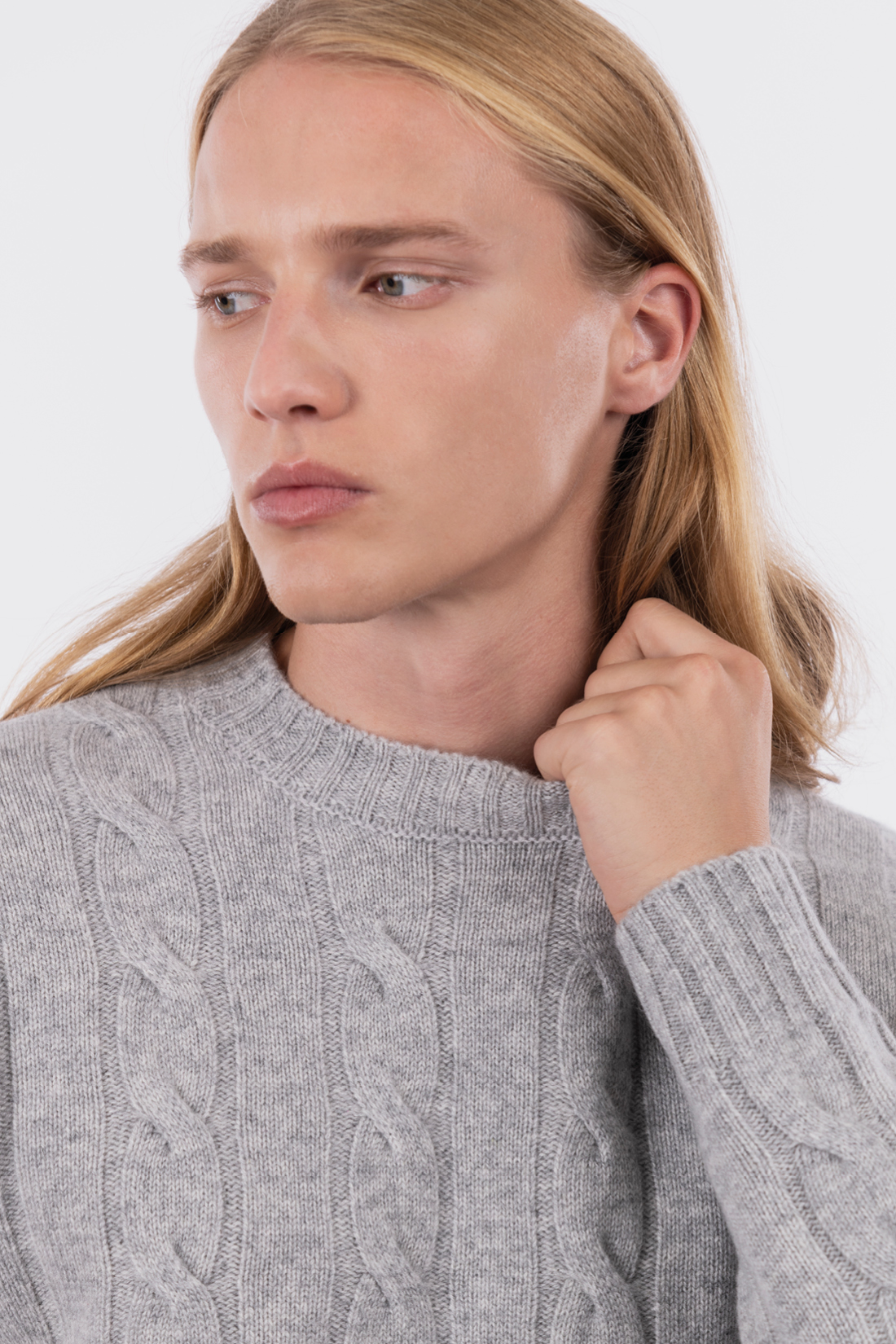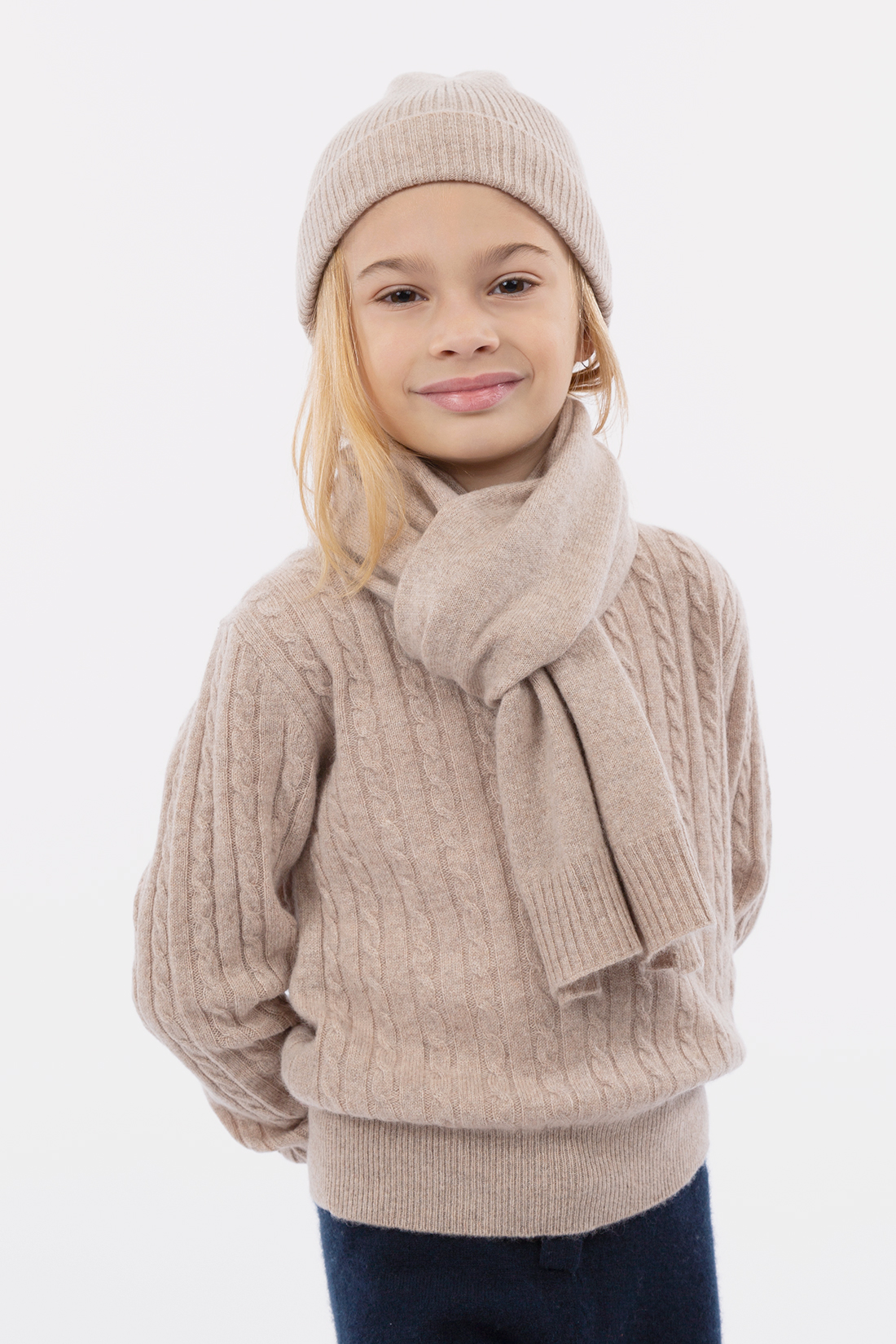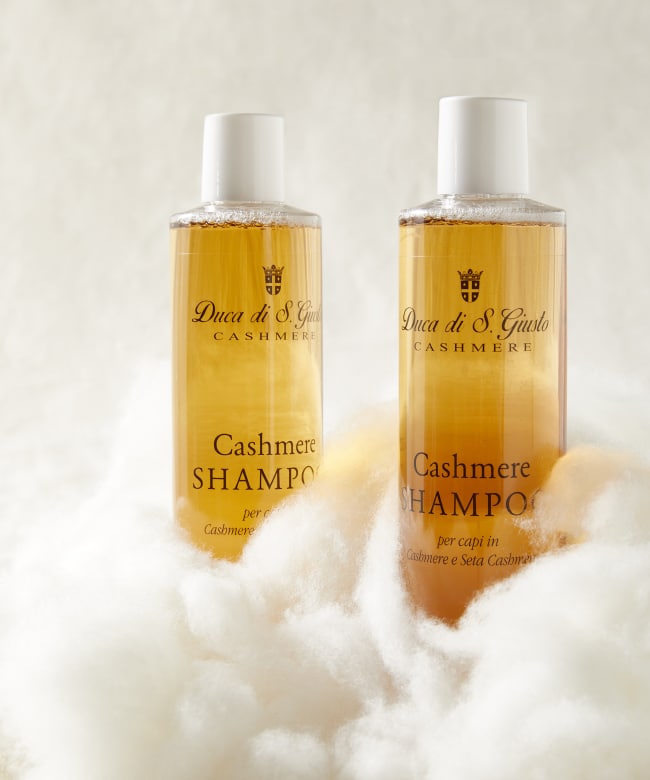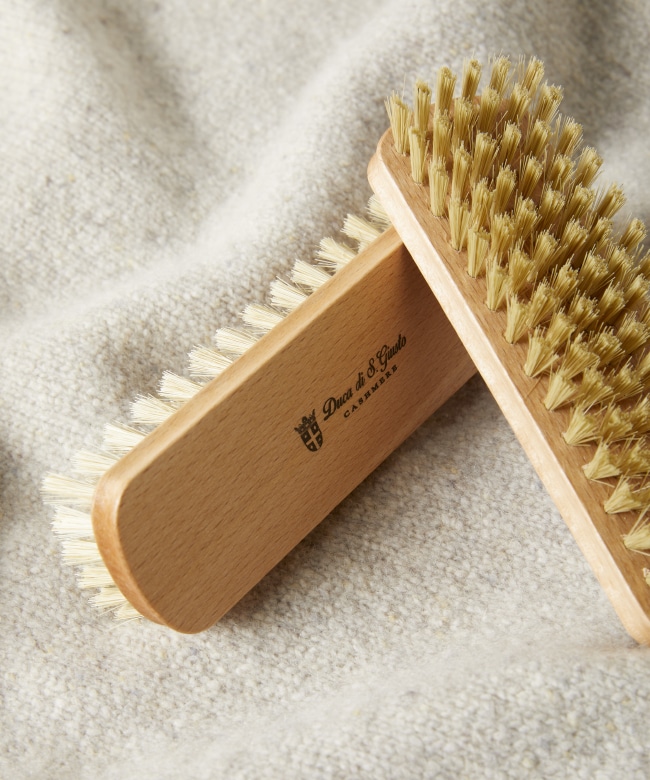Cashmere
Wrap yourself in an embrace of well-being.
Precious origins
Cashmere is a rare fiber obtained from a particular breed of goat: the Hircus. The outer coat is open, long and made of silky fibers known as guard hair, whose color varies from tones of whitish ivory to greyish brown and black.
This part is used to manufacture blankets, rugs, ropes, drapes, and for other non-apparel uses. The layer of coat that will turn into cashmere is instead the warm and thick downy undercoat found next to the skin, known as fleece. The fleece is short, smooth and extremely soft and is the part that effectively protects the animal from the cold. Climate and surroundings are essential to the quality and quantity of the yarn. The Hircus goat lives in the cold Asian highlands, where the climate conditions are particularly harsh (reaching 30-40° below zero) and strong temperature swings between day and night favor the development of this fuzz, generated physiologically in winter by the animal to protect it from bad weather and extremely rigid temperatures.
In springtime, when the weather becomes milder, and the goats naturally shed their winter coat, shepherds collect the finer part using special long-toothed combs. The fibers from the two coats are then separated by de-hairing. The better the mixed mass is de-haired, the purer the final product will be, without black and guard hair. Some source say that the name "cashmere" derives from the Indian region of Kashmir where it appeared in the 17th century as a precious embellishment for scarves and shawls. Today, only limited amounts come from this region, while the finest cashmere in the world comes from the high pastures of Inner Mongolia, an autonomous region of northern China.

Duca di San Giusto cashmere
Cashmere, in its purest form, is a precious, elegant and much sought-after fiber. Its properties and value diminish drastically if mixed with other wool or yarns and, consequently, is sold at a lower price. For us it is essential that every garment fully preserves the extraordinary properties of this noble fiber. For this reason, our winter collections consist exclusively of items that are 100% pure cashmere.
The properties of cashmere

Thermoregulation
Cashmere is ten times warmer than wool.
The air contained in the fiber behaves as insulation and possesses the exceptional ability to thermoregulate the body with respect to the external ambient, thus protecting it from both low and high temperatures. Also, cashmere fiber is hygroscopic. i.e. it absorbs moisture, allowing the body to transpire perfectly and maintain a constant temperature.

Softness
Naturally soft and supple.
Cashmere has an unmistakable soft feel and is irresistibly supple to both the touch and on the skin. Because of its extraordinary elasticity, this precious fiber does not cause itching or redness, but instead delicately envelops like a warm embrace.

Lightweight
A delicate touch on the skin.
Cashmere yarn is both extremely warm and lightweight, thanks to the greater fineness of the fibers. For example, extra-fine Merino wool has a gauge that varies from 15 to 19 microns whereas cashmere ranges from 11 to 18 microns (1 micron = 0.001 millimeters). The longer and finer the fiber, the more exquisite the cashmere obtained will be.

Durability
A cashmere garment will last over time.
Just a little daily care will help you keep your cashmere in good condition so you can enjoy its prized qualities for a long time. For instance, never wear it for two consecutive days; leave it to air and rest before wearing it again. Also remember that cashmere loves water! Not only does it not felt, but by washing it often becomes softer and more supple.
Caring for cashmere
It is important to care for your garment, remembering the cashmere is a living fiber and that a little attention will keep its beauty and quality intact, even after many washes.











